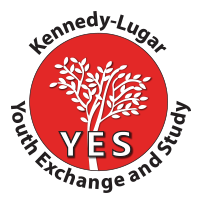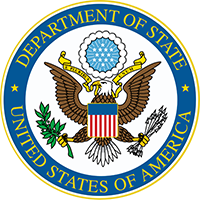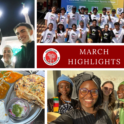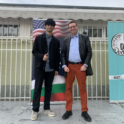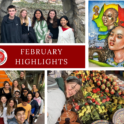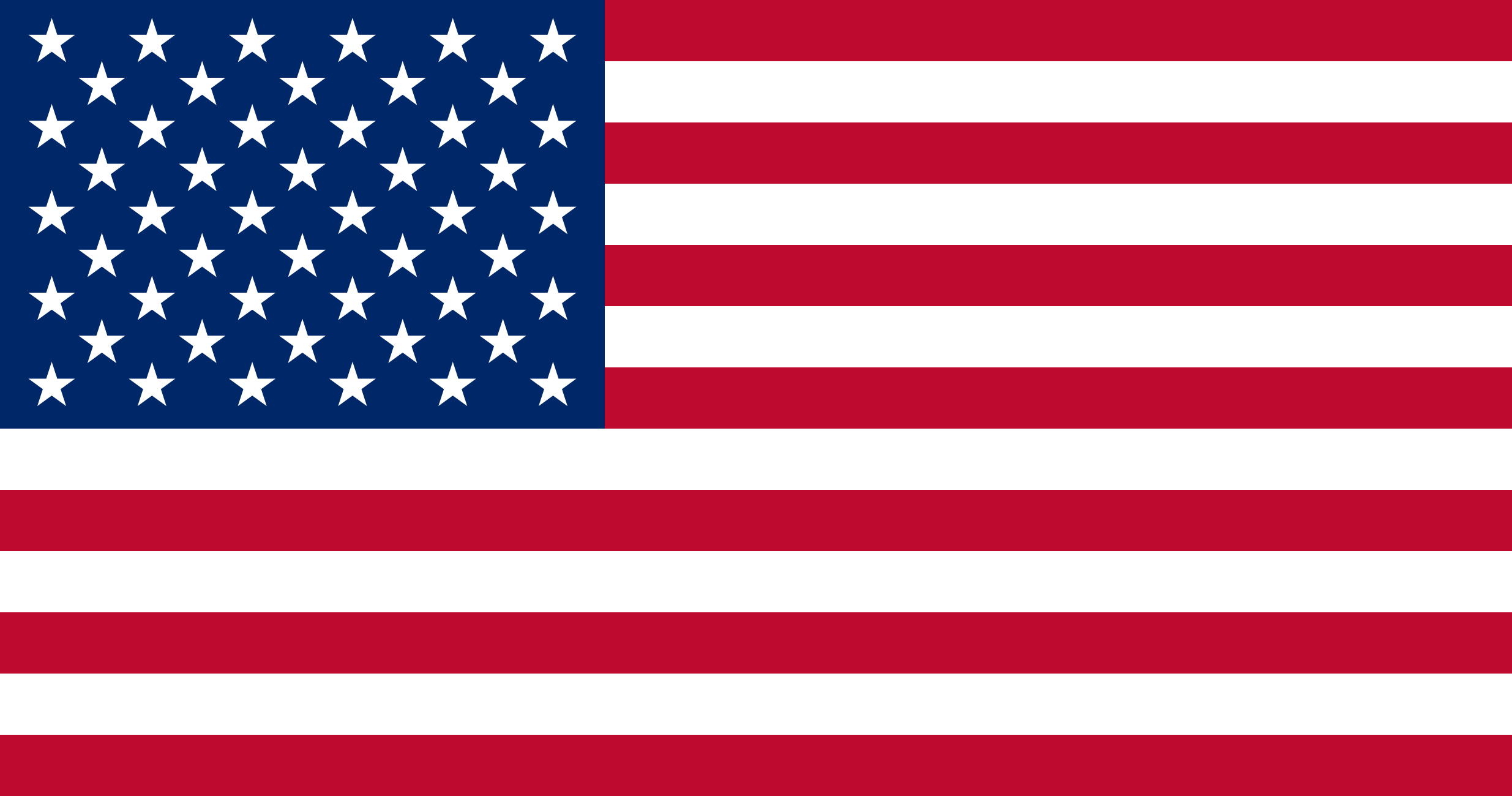StoriesBack to Stories
Trip to Banja Luka
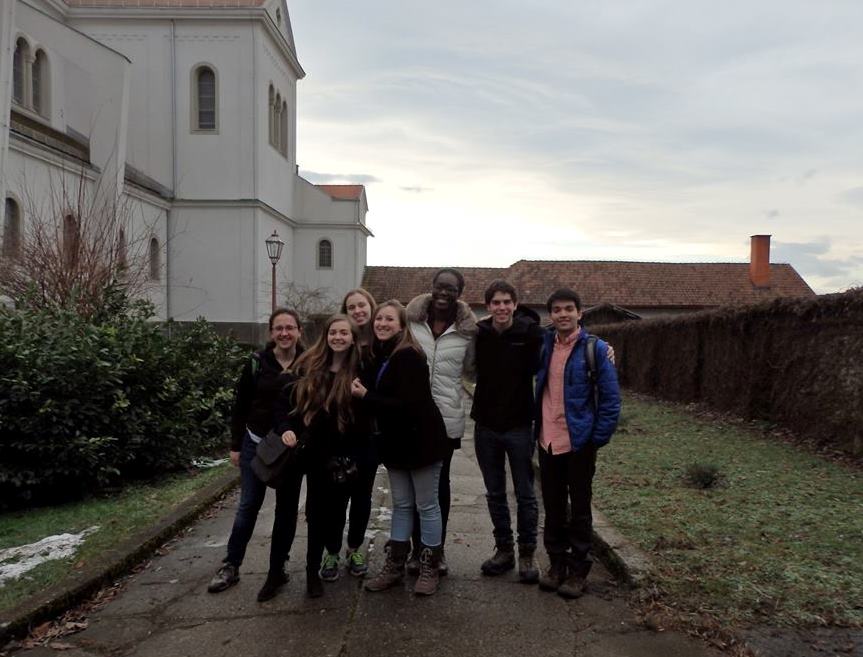
By Rachael P., YES Abroad 2014-2015, Bosnia and Herzegovina
Over my winter vacation (which lasted the entire month of January) I went on a trip with my fellow YES Abroad participants in Sarajevo, Selma (our coordinator), and Elvira, American Councils’ Regional Director, to the city of Banja Luka, where two other YES Abroad Bosnia and Herzegovina students are hosted. We took a 5 and 1/2 hour bus ride through the winding highways of rural Bosnia and there stayed two nights in the city we had heard much about but never experienced. This trip was part of our mid-year orientation, and, as of writing this post, we only have four more months in Bosnia, which is both amazing and horribly sad.
Banja Luka is in the north of Bosnia and Herzegovina and is the capital of Republika Srpska, one of two states within the Bosnia and Herzegovina (the other is the Federation of Bosnia and Herzegovina). With about 200,000 residents, it is slightly more than half the size of Sarajevo, but still the second largest city in the country. The majority ethnic group in Banja Luka is Serb Orthodox, while in Sarajevo it is Bosniak, or Muslim.
The main area of Banja Luka centers on the Hram Hrista Spasitelja Church and Gospodska Ulica (Gospodska Street). In this square also sits the Presidential Palace and various other government buildings of Republika Srpska. Gospodska Ulica was decorated with lovely light strands and decorations for New Year and Orthodox Christmas during our visit. I was surprised by how small the commercial area was (and Sarajevo's isn't that large), but it was beautiful and quite busy on a Friday night. I was struck by how modern the downtown looked, and was told that originally Banja Luka was built in a more "Bosnian" style, but much of the city was destroyed by two consecutive earthquakes in 1969. When it was rebuilt, officials sought inspiration from the largest cities in the region—Zagreb, Croatia, and Belgrade, Serbia.
Although Sarajevo and Banja Luka are only separated by 115 miles, due to different influences (more Serbian influence in Banja Luka and more Austro-Hungarian and Ottoman in Sarajevo), as well as the existence of the Federation of Bosnia and Herzegovina and Republika Srpska, they exhibit some interesting differences.
First, many of the truly "Sarajevan" things that permeate my daily life are not found in Banja Luka. There is no "Old Town" neighborhood, no döner kebab, and traditional Bosnian coffee is not served in the average café. There are no cobblestone streets or Indian cloth being sold from small thatched roofed buildings.
There are, in Banja Luka, many ornate and beautiful churches in the Serbian Orthodox style, wide streets with nice sidewalks, and manicured parks around the city. While you would be hard pressed to find Turkish-inspired food, the Italian food was much more authentic, and when my pasta came with bacon, it was the first time I had eaten pork in almost five months.
Banja Lukans refer to their own language as Serbian, and the Cyrillic script is much more common than it is in Sarajevo. On our second night in Banja Luka, we ate a sit-down meal at a trendy restaurant. The menu was entirely in Cyrillic, and I had quite the time trying to decode the words and then translate them.
Some similarities:
While the downtown area of Banja Luka is generally more modern and newer than Sarajevo, I had major déjà vu when I went to the neighborhood where the Banja Luka YES Abroad students live—nothing like a neighborhood which was clearly built in the communist era to make you feel like home.
An abundance of cafés and “buregdžinice.” Like most significant Bosnian cities, Banja Luka has its own take on ćevapi, which differs from ćevapi in Sarajevo by content—the meat includes pork, while it is pork-free in Sarajevo. Also, in terms of appearance, Banjalučki ćevapi are served in a sort of a meat patty of multiple sausages rather than individual links. (I know this seems very specific but I promise, ćevapi differences are important!)
In addition to visiting downtown Banja Luka, we also visited a Trappist monastery a small distance outside the city. The monastery was established in 1869 and a few decades later was the largest Trappist monastery in the world, with 219 monks. In 2015, it houses only three monks, but they continue the tradition of making region-wide famous cheese and other homemade products, such as candles, alcohol, and natural remedies.
I always enjoy being able to see other Bosnian cities and towns, and this trip was no exception! Other trips on the horizon include hiking to the village of Lukomir and an end-of-year orientation in Mostar.
